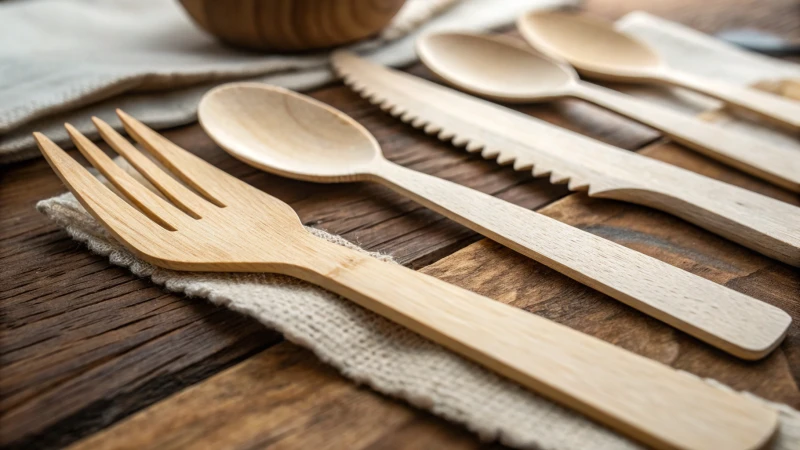
Ever wondered how to make eco-friendly wooden cutlery last longer without compromising its sustainability?
By adopting advanced wood treatment processes and specialized coatings, manufacturers can significantly enhance the lifespan and durability of disposable wooden cutlery. These innovations shield the wood from moisture and wear, extending its usability while maintaining environmental benefits.
I remember attending an outdoor festival, balancing a paper plate in one hand and wooden cutlery in the other. It was then I realized the importance of durability in such products. In this blog, I dive into the innovative methods that are transforming how we think about disposable wooden cutlery. From state-of-the-art treatments to eco-friendly coatings, explore how these advancements not only meet but exceed consumer expectations for both durability and sustainability.
Advanced coatings increase wooden cutlery's moisture resistance.True
Coatings protect the wood from moisture, enhancing durability.
Wood treatment processes compromise eco-friendliness of cutlery.False
Innovations ensure treatments maintain the eco-friendly nature.
How Do Advanced Wood Treatment Processes Work?
Ever wondered how to make wood last longer while being kind to the planet?
Advanced wood treatments like thermal modification, acetylation, and polymer impregnation boost wood's durability and decay resistance, ideal for sustainable projects.
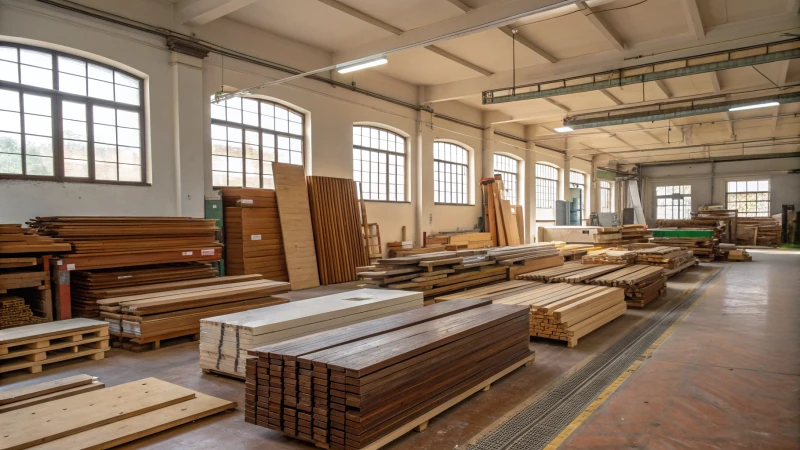
Thermal Modification
I remember the first time I heard about thermal modification—it's like giving wood a sauna! This process heats wood to over 180°C in a low-oxygen environment. By doing so, it changes the wood's cell structure, making it more durable and less prone to soaking up moisture. It's a fantastic, eco-friendly alternative to chemical preservatives, which is why it's becoming a go-to choice in sustainable construction1.
| Benefits | Applications |
|---|---|
| Increased durability | Outdoor decking |
| Improved stability | Cladding |
| Resistance to decay | Saunas |
Acetylation
When I first learned about acetylation, it felt like uncovering a secret recipe. This chemical process transforms the wood by reacting acetic anhydride with its hydroxyl groups, significantly enhancing its dimensional stability2 and resistance to rot. It's perfect for places with high humidity or where wood is in direct contact with water, like window frames or garden furniture.
- Benefits: Increases lifespan, reduces maintenance
- Popular Products: Window frames, garden furniture
Polymer Impregnation
The idea of polymer impregnation might sound like sci-fi, but it's fascinating. This process involves infusing wood with polymers such as acrylates or epoxies, creating a composite material that keeps the wood's natural beauty while dramatically improving its strength and resistance to environmental factors3. It's especially useful for high-performance needs like marine environments.
- Advantages: Enhanced mechanical properties, superior durability
- Use Cases: Boat decks, exterior architectural elements
These advanced processes are not just about extending the life of wood; they're about aligning with modern demands for durability and sustainability. Techniques like thermal modification, acetylation, and polymer impregnation help ensure that wooden products not only meet contemporary standards but also support ecological initiatives. It's all about crafting a future where we can enjoy natural materials without compromising on quality or conscience.
Thermal modification uses chemical preservatives.False
Thermal modification is eco-friendly and does not use chemicals.
Acetylation improves wood's dimensional stability.True
Acetylation changes wood's structure, enhancing stability and rot resistance.
How Do Coatings Enhance Durability in Wooden Cutlery?
Remember the first time you swapped plastic for wooden cutlery? Let's explore how coatings make this switch more durable and delightful.
Coatings on wooden cutlery enhance durability by creating a moisture barrier, preventing splinters, and boosting resistance to wear. These protective layers ensure wooden utensils last longer and remain safe, making them a practical choice for various settings.
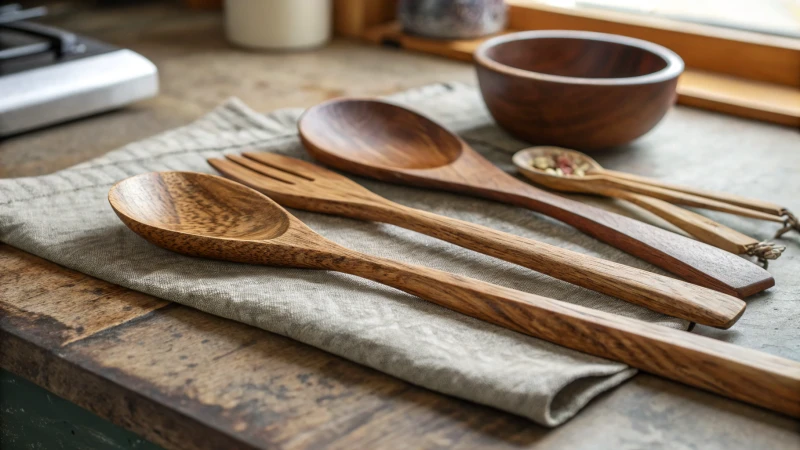
The Role of Moisture Barriers
I recall the early days when I started using wooden cutlery, thinking about their natural feel and the environmental benefits they brought along. One of the first things I noticed was the need for them to withstand moisture. Coatings like food-grade waxes or lacquers serve as a moisture barrier4. Without these, wood tends to absorb liquids, leading to warping or degradation. These coatings prevent moisture absorption, keeping my wooden utensils in top shape much longer.
Splinter Prevention and Safety
There was this one time at a family picnic when my niece got a splinter from an uncoated wooden fork. It wasn't pleasant, and I realized how crucial it was for wooden cutlery to be safe, especially when kids are around. Coatings smooth out the surface, significantly reducing the chance of splinters and making them safe for everyone.
Enhancing Wear Resistance
In my kitchen, where I use wooden cutlery frequently, I noticed that the ones with coatings lasted much longer. Washing and repeated use can lead to wear over time. Coatings act as a protective shield against abrasion, prolonging their life, which is essential for those of us who are eco-conscious and prefer sustainable options.
| Feature | Benefits |
|---|---|
| Moisture Barrier | Prevents warping and decay |
| Splinter-Free | Enhances user safety |
| Wear Resistant | Increases product lifespan |
Environmental Implications
While I'm thrilled about the durability coatings bring to my cutlery, I can't ignore their environmental impact. Eco-friendly coatings that biodegrade or are made from natural materials align perfectly with my sustainability values. Understanding the environmental certifications5 of these coatings is crucial when I'm making procurement decisions.
Technological Advancements
It's fascinating how technology keeps evolving! I've come across nano-coatings that provide an incredibly thin yet effective layer of protection without altering the natural look of the wood. With these advancements, businesses like mine can offer products that are not only durable but also environmentally friendly. To delve deeper into how these innovations can benefit your business, explore resources on sustainable innovations in the industry. Learn more6 about the latest trends in eco-friendly coatings for wooden cutlery.
Coatings prevent wooden cutlery from warping.True
Coatings act as moisture barriers, preventing wood from absorbing water.
Wooden cutlery without coatings is splinter-free.False
Coatings smooth the surface, reducing splinter risks in wooden cutlery.
How Does Choosing the Right Material Impact Sustainability?
Ever wondered how the right materials can make or break our planet's future?
Choosing sustainable materials significantly impacts environmental health by influencing every stage of a product's lifecycle. By opting for eco-friendly, recyclable, or biodegradable materials, we can drastically reduce waste, conserve resources, and lower carbon emissions, thereby fostering a healthier planet.
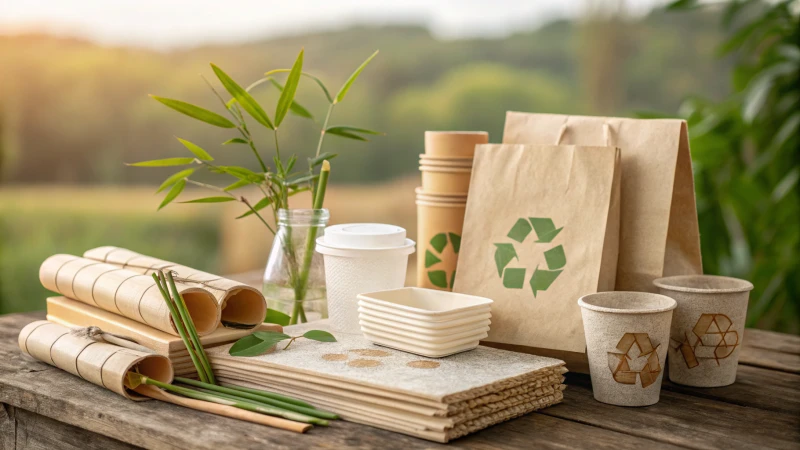
Understanding Material Selection
I remember the moment it clicked for me: the seemingly small act of choosing biodegradable over plastic wasn't just a drop in the ocean; it was a ripple effect that could transform entire ecosystems. Selecting the right materials is about making choices that align with sustainability goals. For instance, when I opted for biodegradable materials7 in my projects, it wasn't just about reducing landfill waste; it felt like actively contributing to preserving natural ecosystems.
Lifecycle Impact
Every product tells a story from its inception to its eventual disposal, and the materials we choose dictate how sustainable that story is. I once worked with recycled aluminum, and it was eye-opening to see how this choice offered durability and renewability8, both crucial for reducing our environmental footprint. Here’s a glimpse into the lifecycle benefits of different materials:
| Material | Renewable | Recyclable | Biodegradable |
|---|---|---|---|
| Bamboo | Yes | Yes | Yes |
| Recycled Aluminum | No | Yes | No |
| Traditional Plastic | No | No | No |
Economic and Environmental Balance
Finding that sweet spot between cost and ecological impact can be tricky, but it’s worth the effort. I’ve seen firsthand how investing in advanced wood treatments9 can not only enhance durability but also lead to significant savings over time.
Technological Advancements
Technology is a game-changer in sustainability. Innovations in coatings have extended the life of eco-friendly products, making them more competitive with traditional options. I’ve watched these advancements transform industries and knew that embracing them was crucial for sustainable success.
Promoting Circular Economy
Adopting sustainable material selection is a step toward a circular economy where products are designed for reuse or recycling. This approach doesn’t just conserve resources; it actively reduces pollution and lessens our reliance on new raw materials. For me, making these choices isn’t just about business; it’s about aligning with broader goals that safeguard our planet’s future.
Biodegradable materials reduce landfill waste.True
Biodegradable materials break down naturally, decreasing landfill accumulation.
Traditional plastics are recyclable and biodegradable.False
Traditional plastics are neither easily recyclable nor biodegradable.
How Can Manufacturers Balance Cost and Eco-Friendliness?
Balancing the books while saving the planet—sounds like a daunting task, right? But as manufacturers, we have the power to innovate and make it happen.
To balance cost and eco-friendliness, manufacturers can embrace energy-efficient technologies, use sustainable materials, and improve waste management. These steps not only cut expenses over time but also boost a company’s image as an eco-friendly brand.
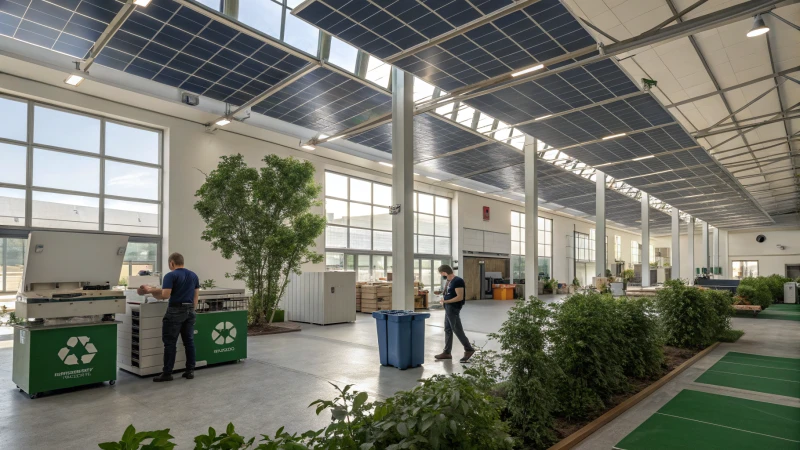
Leveraging Technology for Sustainable Production
I remember the first time I walked into a factory humming with new energy-efficient machinery10. It was like stepping into the future. By investing in such technology, manufacturers can drastically cut down on both energy bills and carbon footprints. It's a win-win that pays off in the long run, financially and environmentally.
Sourcing Sustainable Materials
Choosing the right materials is like finding the perfect ingredient for a dish—it makes all the difference. Once, I was part of a project that swapped out traditional plastics for bamboo. The change was challenging at first but seeing the environmental impact shrink while maintaining quality was incredibly rewarding.
| Material Type | Cost Effectiveness | Environmental Impact |
|---|---|---|
| Bamboo | High | Low |
| Recycled Plastics | Medium | Medium |
| Virgin Plastics | Low | High |
Options like bamboo or recycled plastics can hit that sweet spot of sustainability and cost-effectiveness.
Optimizing Waste Management
Waste not, want not. That's what my grandmother always said, and it rings true in manufacturing too. Implementing waste management systems, such as recycling and reusing within facilities, reduces disposal costs and environmental impact. I saw this firsthand with closed-loop manufacturing11 systems, where waste becomes a resource, making a significant difference in sustainability goals.
Incentivizing Sustainable Practices
Did you know there are often financial incentives for going green? I've watched companies transform their operations thanks to grants and tax breaks for adopting green technologies. Staying informed about these opportunities can make those initial investments much less daunting.
Building Long-Term Partnerships
Partnerships are like friendships—they thrive on shared values. By collaborating with suppliers who are equally committed to sustainability, manufacturers can enjoy cost savings through bulk purchases of eco-friendly materials. In my experience, these relationships also ensure a steady supply chain that aligns with environmental goals.
For us manufacturers striving to keep our edge while staying committed to sustainability, integrating these strategies can be both a challenge and an exciting journey. It’s about making choices today that lead to a better tomorrow.
Energy-efficient machinery reduces operational costs.True
Using energy-efficient machinery lowers energy consumption, saving costs.
Virgin plastics have a lower environmental impact than bamboo.False
Virgin plastics have a high environmental impact compared to bamboo.
Conclusion
Manufacturers can enhance the durability of disposable wooden cutlery through advanced treatments and coatings, ensuring longevity while maintaining eco-friendliness and meeting consumer demands for sustainable products.
-
Explore applications of thermally modified wood in sustainable building projects. ↩
-
Discover how acetylation enhances wood's dimensional stability and resistance to decay. ↩
-
Find out how polymer impregnation strengthens wood against environmental challenges. ↩
-
Discover how food-grade waxes and lacquers protect wooden cutlery from moisture, enhancing durability. ↩
-
Understand which certifications indicate environmentally friendly coatings, helping you make informed purchasing decisions. ↩
-
Stay updated on cutting-edge coating technologies that enhance the sustainability and durability of wooden cutlery. ↩
-
Discover the benefits of biodegradable materials in reducing environmental impact and promoting sustainability. ↩
-
Learn how renewable materials can offer ecological and economic advantages throughout their lifecycle. ↩
-
Explore how advanced treatments can extend the lifespan and utility of wooden products sustainably. ↩
-
Discover how energy-efficient machinery can reduce operational costs while minimizing carbon footprint. ↩
-
Learn about closed-loop manufacturing and its role in reducing waste and costs. ↩

